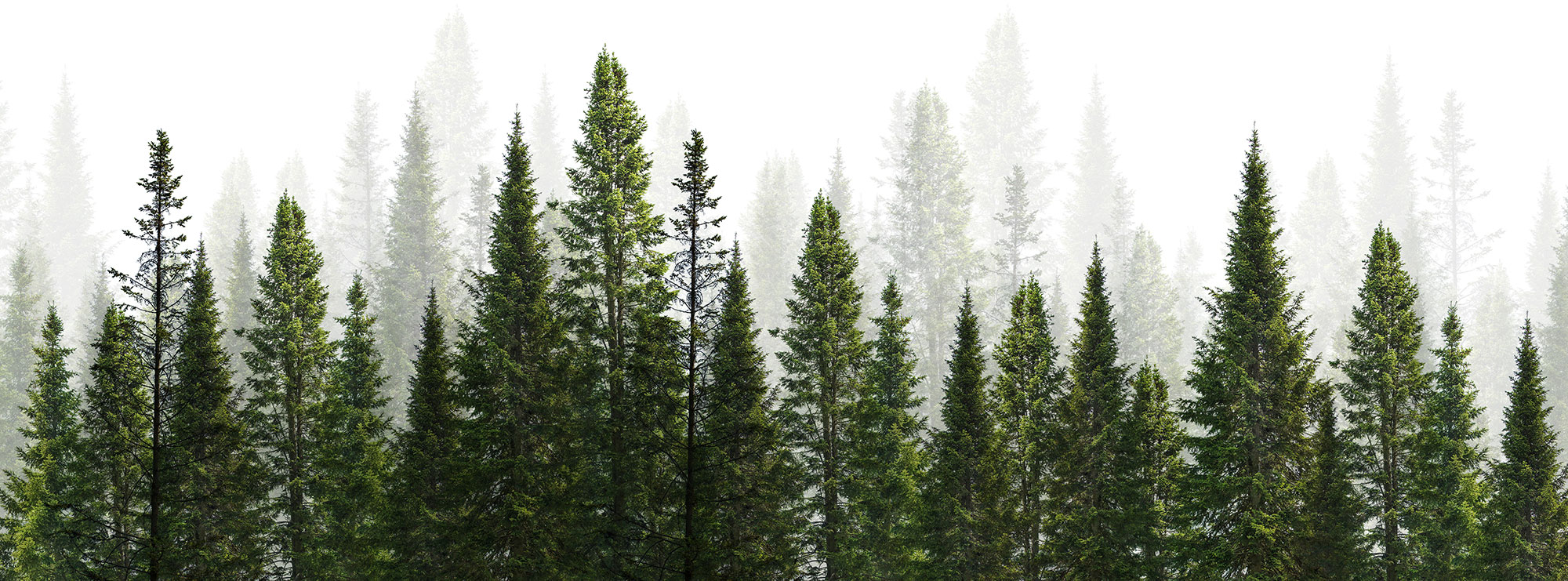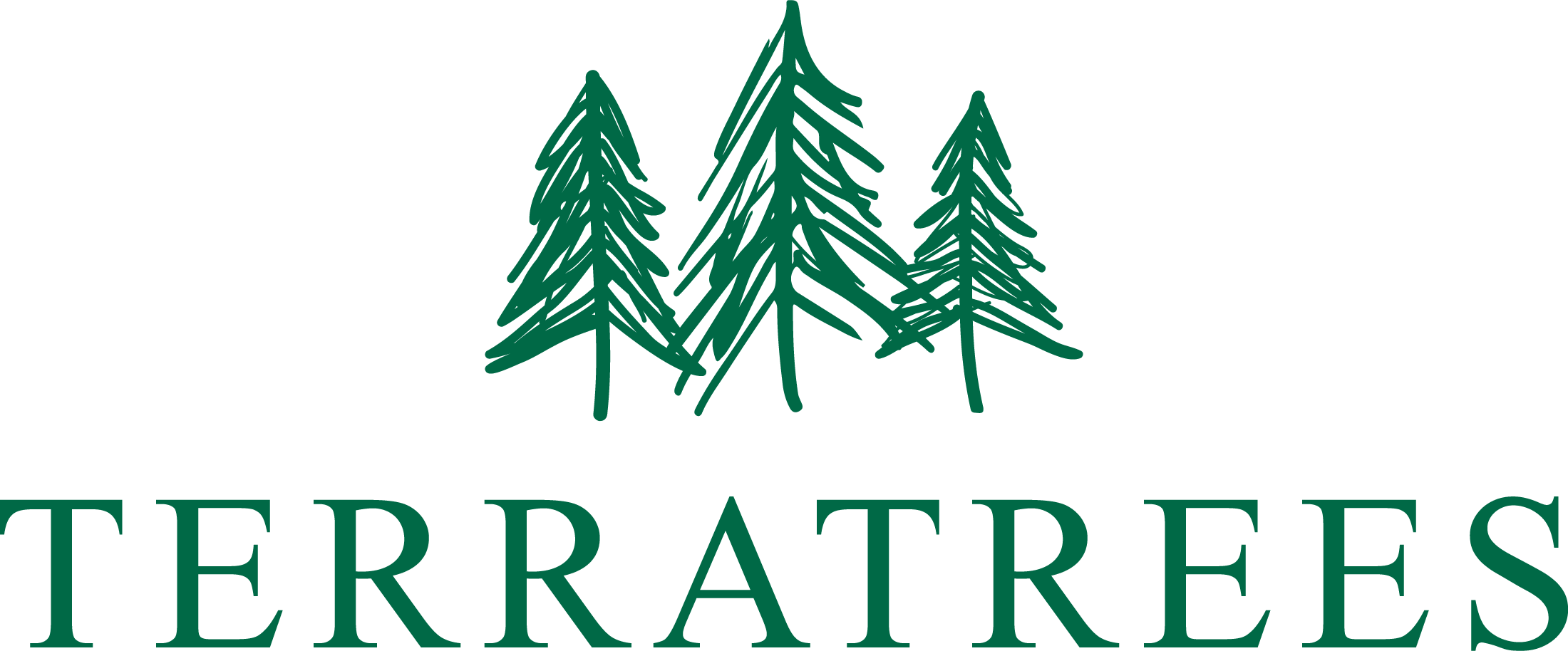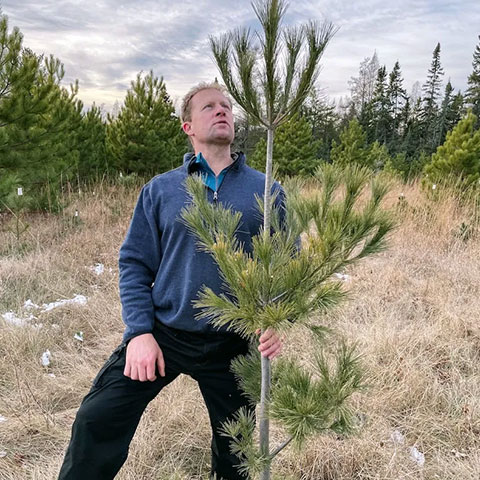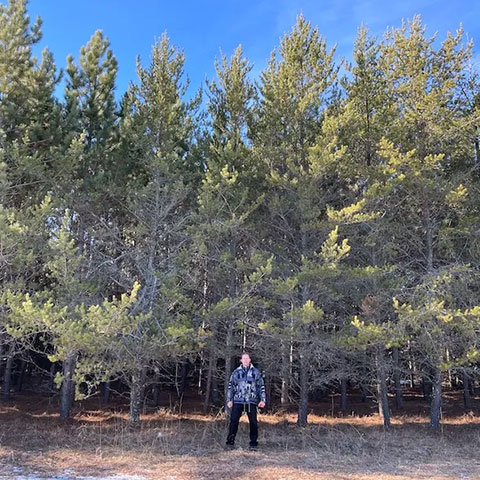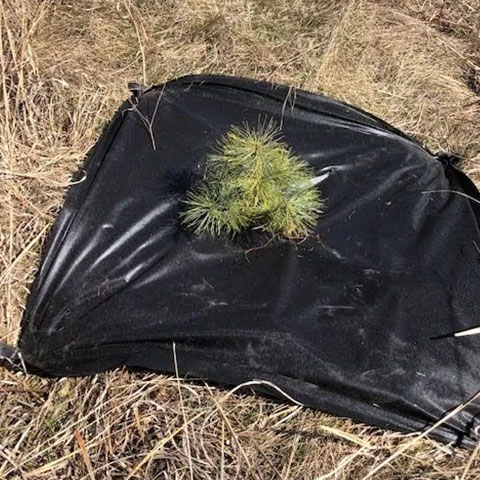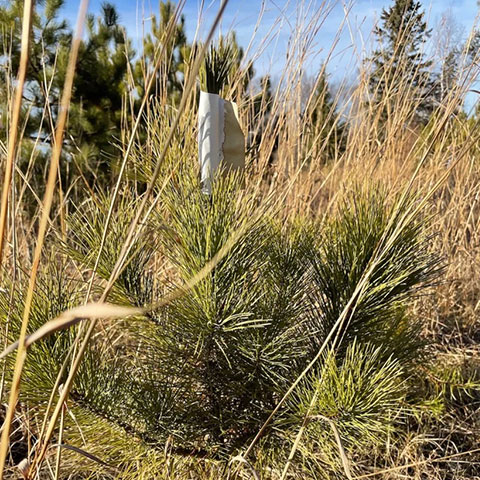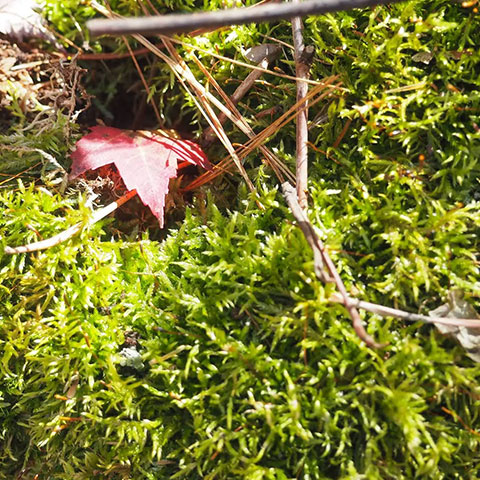Forest Management
No Walk-Away Forestry
Trees need care. Lots of it.
Many tree-planting organizations are “plant and go” — meaning they don’t put resources into managing the trees after they’re placed in the ground. Reports of massive die-offs following much-hyped tree-planting campaigns sadden us because it’s such a waste. The reality is, most trees take a long time to grow and need tending to thrive. There is much to consider — including sound science — even before putting seedlings into the ground. Young trees are particularly vulnerable to deer and rabbit browsing, as well as vegetation competition for sunlight and water. In our experience, forestation projects on most planting sites in Minnesota require tending for five to ten years to ensure survival.
Young White Pine
This young white pine has had many good years of growth as indicated by the wide areas between branches (whorls).
Timber Line
This timber stand needs thinning and understory planting to increase diversity, lower the risk of wildfires, pest, and disease, as well as provide resilience in the form of different age classes. #todolist
Weed Mat for Seedling
Sometimes we use weed mat for seedlings to control the brush that would compete for sunlight.
Checking Soil
David is checking the soil condition and needle duff layer in an area that needs species diversity.
Footprints
We found these fun footprints in a remote section of our land. It’s either a small Minnesota timber wolf or a large coyote. 🐾
Field
Once in a while we use mechanical devices to plant, and then we come back and hand plant trees of other species. But we prefer not to use the mechanical planters as they disturb the soil so much.
Bud-capped White Pine
This is a 2-year-old white pine that we’ve bud-capped by hand to prevent deer browse of the apex bud. We do this every fall for all our pines until they reach ~6 feet tall.
The Total Reforestation Process
Identify degraded land to reforest
Buy the land
Identify native tree species
Spring planting and pest control
Perpetual Conservation Easement
Place a Perpetual Conservation Easement (PCE) on the land.
5-10 years
Tend to trees and monitor replanting needs to fulfill a 100% survival rate guarantee.
25-75 years
Performing possible thinnings to ensure the survival rate of trees on the land.
How Our Forests Are Managed
TerraTrees’ purpose is to reforest land. After we reforest, this new stand of trees will most likely need to be ‘managed’ when they are 25-75 years old. Managing includes various silviculture practices. Periodically, we thoughtfully harvest a small number of trees in a silviculture process called “selective thinning.”
The tree thinnings we practice typically remove between 2%-30% of the trees on a parcel. Most tree thinnings result in the opportunity to immediately plant more trees to boost biodiversity, increase variety of age classes, and help regenerate natural seedlings in the understory. This creates a more resilient forest which is so critical considering modern climate pressures.
Because fire is a natural way forests have regenerated for thousands of years, the absence of fire can create issues (as seen in western states such as California where fires have been suppressed for a long time without any mechanical management). If large trees are packed closely together, flames can spread quickly between them. Selective thinning can reduce the risk of fires getting out of control.
Selective thinning can also help stop the spread of diseases and insects. CNN’s Jonah Bader calls this social distancing for trees, and his piece on the importance of responsibly managed forests is one of the best we’ve read.
Each spring, we replant in the understory. Selective thinning allows the standing trees to breathe better. To lock away even more carbon. To stretch their canopies and provide the understory seedlings a protective, dappled sunlight. Ultimately, forest management takes time and resources, but we’re here for it. The trees – and our planet – deserve it.
Let’s Expand America’s Forest Footprint Together
Plant Trees Today